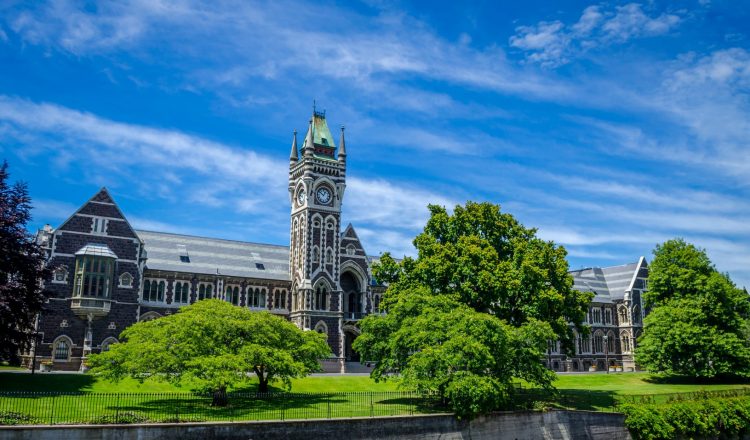ニュージーランドの教育について
私たちの教育システムは、私たちのユニークで多様な社会を反映しています。私たちは、さまざまな能力、宗教的信条、民族、収入レベル、教育と学習に関する考え方を歓迎します。私たちは、すべてのレベルで一貫した質の高い教育を生徒に提供するためのプロセスを備えています。
ニュージーランドの教育は、学生を中心とした進路であり、継続的に学習を進めていくための選択肢を提供し、以下のようにしています。
- 生徒は毎年進歩します
- あるレベルでの学習が、選択した進路に沿った次のステップの基礎となります。
早期学習は、子どもたちが自信を持ち、世界に好奇心を持つことを助けます。子どもが学校に行ったときに良い成績を収めることができ、その後の人生で強く、幸せで、成功するための重要なスキルを身につけることができます。
ECE(Early Childhood Education, 幼児教育)は義務教育ではありませんが、約96.8%の子どもがECEに通っています。
小学校とセカンダリースクールは第二段階の教育です。
ニュージーランド国籍または永住権をお持ちの方は、5歳から19歳までの間、公立学校(政府が所有し、資金を提供する学校)での教育費が無料になります。
学校教育は6歳から16歳までが義務教育です。ほとんどの学校では、お子さんが5歳になった日から学校に通うことができます(新学年になるまで待つ必要はありません)。しかし、一部の学校では、学期の初めに子どもたちを集団で学校に入学させる方針をとっています(コホート入学)。ほとんどの子どもたちは17歳くらいまで学校に通います。
学校の教育システムは、13段階の学年で構成されています。初等教育はYear 1から始まり、Year 8まで(約5歳から12歳)です。中等教育は、Year 9からYear 13まで(約13から17歳)です。
地域の学校
多くの子どもたちは、住んでいる場所の近くにある学校に通います。多くの学校では、学区制(zoning)と呼ばれる入学制度を採用しています。学校に近い地域(学区、スクールゾーンとも)に住んでいれば、お子さんはその学校への入学が保証されます。住んでいる地域以外の学校に子どもを通わせたい場合は、申請しなければならないこともありますし、席も保証されません。お住まいの地域の学校によっては、男女別学か男女共学の学校に通わせるか選ぶことができます。
公立、インテグレーテッド、私立学校
ニュージーランドのほとんどの学校は、国によって所有され、資金を供給されています(公立学校)。これらは、国のカリキュラムを教え、世俗的(非宗教的)です。インテグレーテッドスクールは、特別な特徴を持つ学校です。政府から資金提供を受け、国のカリキュラムを教えています。各校の価値観を反映した独自の目的や目標を持ち、それらは特定の哲学や宗教に基づいて設定されています。強制的に在籍料を支払わなければなりません。私立学校は、政府からの資金援助もありますが、ほとんどが保護者からの学費徴収で賄われています。独自の学習プログラムを開発し、国のカリキュラムに従う必要はありません。
高等学校レベルでは、生徒は専門的な職業学習を始めることができます。生徒は多くのプログラムや機関から仕事や進学の支援を受けることができます。
ユース・ギャランティ(若者の保証)
ユース・ギャランティコースは、16歳から19歳の学生を対象に、高等教育機関でNCEAレベル1~3またはレベル1~3のサーティフィケートを取得するための学習機会を無料で提供するものです。これらのコースは通常、職業に重点を置いています。
職業訓練校
職業訓練校では、Year 11からYear 13(15〜18歳)の学生を対象に、職業や技術に関するプログラムを教えています。学校やその他の業者によって運営されています。
技術研究所(Institutes of Technology)
技術研究所やポリテクニックでは、入門から学位取得までの専門的・職業的な教育・訓練を行っています。産業別訓練機関は、特定の産業(農業、建築・建設、自動車産業など)を代表する機関です。その分野のトレーニングや資格を提供しています。政府や産業界が出資しています。
私立高等教育機関(Private Training Establishment)
私立高等教育機関では、サーティフィケートやディプロマレベルの特定の職業コースを提供しています(例:旅行・観光業)。
大学
ニュージーランドには8つの公立大学があります。各大学は、多くの科目で学位を提供しており、専門的な職業学位にも強みを持っています。すべての大学は国際的に認められています。これらの大学は、他国の大学とは研究・教育プログラムで協力しており、また、ニュージーランドや海外のビジネスコミュニティとは研究・開発で協力しています。

















































